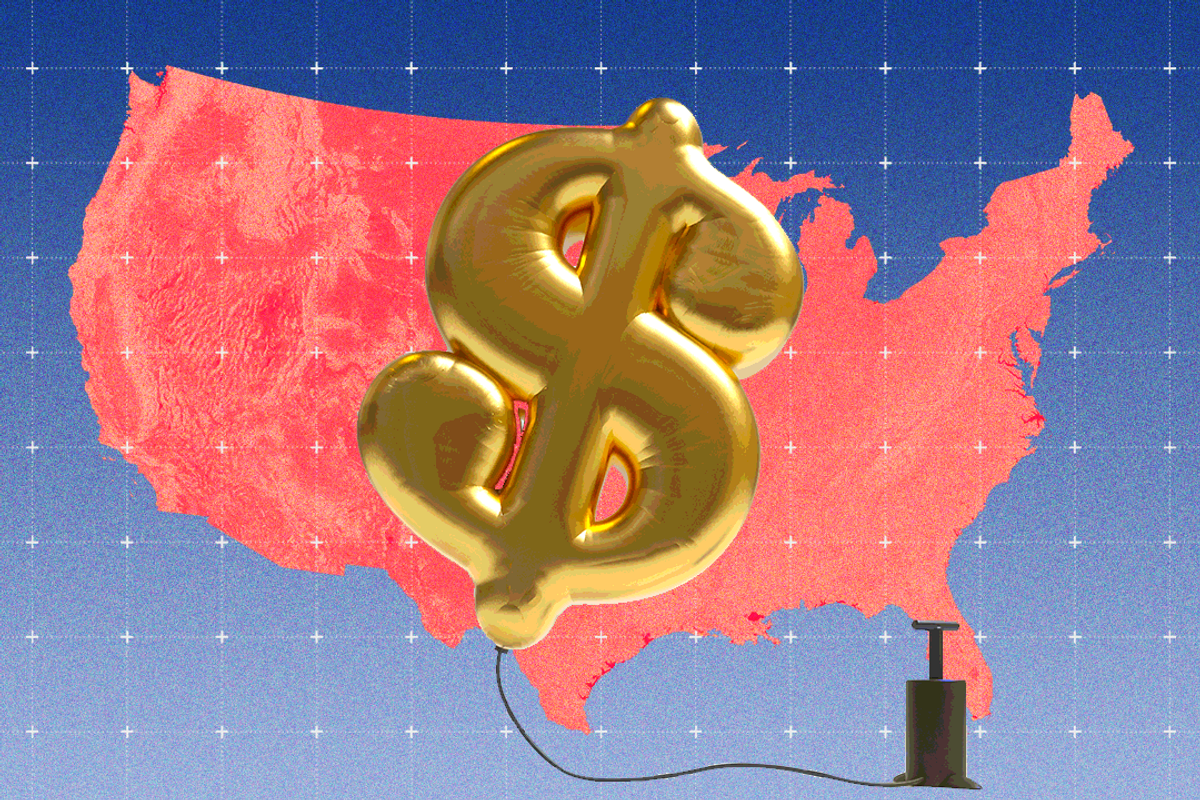Today is the one-year anniversary of the Inflation Reduction Act, President Joe Biden’s climate, health care, and tax law. The president is having a celebration at the White House, and seemingly every major newspaper and TV network is marking the occasion by looking back and forward.
I have spent the past year — and, frankly, the past years — covering the IRA. I covered the IRA long before it had its final, silly name. I stayed up all night in the Capitol to watch the Senate pass the law, and I went back a week later to see the House of Representatives pass it. I will be thinking about this law for a long time.
And a year on, what remains most astonishing to me is that the law exists at all.
Get one great climate story in your inbox every day:
Scientists have known about the risk of climate change for more than a century — Svante Arrhenius, the great Swedish chemist, first warned that carbon pollution could raise global temperatures in 1896 — but for much of that time, the threat remained intellectual and far-off. That changed in the 1960s and 1970s, as researchers built the first computer models of the global climate, and it became clear that human-induced warming would happen on politically meaningful time scales.
Yet uncertainty remained. And the Reagan administration, dominated by anti-environmentalist ideologues, did not address climate change when it might have.
But climate change did not really make itself felt as a major political issue in the United States until 1988, when the NASA scientist Jim Hansen warned a Senate committee that the planet had now begun to warm. Arguably it did not emerge as an international issue until 1992, when representatives from around the world gathered in Rio de Janeiro for the Earth Summit.
For the next 30 years, the United States did not have a climate policy. The world’s hegemon and the flagbearer of democracy did not have an answer to the chemical crisis brewing in its atmosphere.
It was even worse than this, actually. Because not only did we lack an answer to solving it, but the United States was, in fact, the closest thing to a principal antagonist.
In the 1990s, the United States — its manufacturers, its railroads, its oil companies, its utilities, even its public-relations firms — originated the lie that climate change was somehow uncertain or made-up.
In 1997, the Senate voted 95-0 to block the United States from joining any climate treaty that mandated international emissions cuts.
In 2001, President George W. Bush — after promising to address climate change during his campaign — pulled out of negotiations over the Kyoto Protocol and announced a massive buildout of coal power plants. He began spouting denialism from the White House, telling reporters: “We do not know how much our climate could or will change in the future.”
Meanwhile, Germany was rolling out its generous solar subsidies, which would ultimately trigger massive cost declines in the price of solar power.
In 2005, the Bush administration fought a lawsuit that would have forced them to acknowledge that greenhouse gases are a form of pollution.
The European Union, meanwhile, was launching its massive carbon-pollution market.
A year later, the Supreme Court finally forced the issue and told the Environmental Protection Agency to study carbon dioxide. (It quickly found that greenhouse gases were, of course, a form of pollution, essentially forcing it to regulate them.) But Bush’s staff blocked the EPA by refusing to open its emails.
In 2009, the new administration only brought some relief. Barack Obama and John McCain had each promised to address climate change during the campaign, but Obama’s sweeping climate bill failed in the Senate. McCain did not help him revive it.
Through the 2010s, Obama implemented a piecemeal climate policy through regulation, encouraging tighter fuel standards for cars and trucks. He also helped secure the first truly global climate treaty, the Paris Agreement.
But he did not succeed in passing a comprehensive climate policy through Congress. Nor did he restrict carbon pollution from power plants before he left office.
And then President Donald Trump was elected. He pulled out of the Paris Agreement and renounced climate change as a “hoax.” He rolled back Obama’s climate rules. Trump seemed to revel in global warming and even framed carbon pollution as a positive good — because, after all, it was just one more way to own the libs.
Thirty years went by like this. For 30 years, this was the highest-profile failure of American politics. We were poisoning the world and doing almost nothing about it. And in fact our leaders often recklessly — joyfully! — made climate change worse.
Which is not to say that every rejected policy was perfect or that America was entirely feckless. Federal tax credits began encouraging wind and solar power in the 1990s and 2000s; American cities and states became some of the world’s most aggressive carbon regulators. But America as a whole remained negligent and idle.
That ignominy changed a year ago today. The Inflation Reduction Act is not perfect, and while it generously supports the technologies and tools needed for decarbonization, it contains no mechanism to mandate carbon cuts. It could still be undone by corporate greed or future maladministration. But it is a climate law and it could decarbonize much of the economy.
Fighting climate change will require countless difficult decisions and trade-offs. It will make us do hard things — technically, politically, even ecologically. But for 30 years, America refused even to do the easy things. That changed a year ago today. I am grateful for this climate law. It is not enough, it must not be enough, but it is far more than I once thought I might see.
Read more about the Inflation Reduction Act:
7 Lessons from the First Year of Biden’s Climate Law













 IEA
IEA